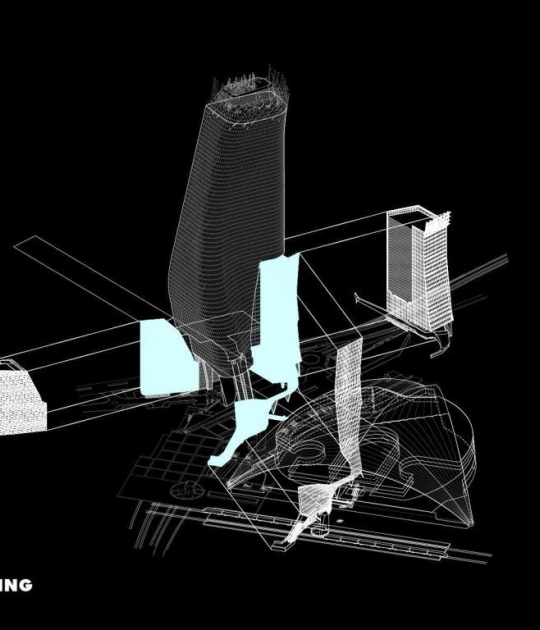Described in a project statement as "a piece of Korea grafted onto Los Angeles," the rooftop garden overlooks a courtyard building designed to reference traditional Korean Hanok dwellings, a type of residential architecture designed and sited in relation to its surroundings.
In the cold northern regions of the peninsula, for example, Hanok houses can be square-shaped, an approach that helps to retain heat and block cold winds; The approach has been adopted for the new museum, which is arranged with a series of interconnected galleries, meeting rooms, and offices circling a central open space.
Project description by Morphosis
The new home for the Korean American National Museum supports the institution’s mission to preserve, study and present Korean American cultural heritage, from the legacy of the first Korean immigrants into the United States to the broad contributions of Korean Americans today and into the future. The design of the building reflects this mission through landscape elements, spatial organization, and architectural forms that symbolize and explore the Korean American experience.
As nature is a perennial, unifying theme of Korean art and culture, we focused on the narrative opportunities of landscape to define the design of the museum. As we did so, we were inspired by Korean American architect Eulho Suh’s concept of ‘displaced memory’ and its embodiment in space: our design is an allegorical migration of the Korean landscape and expression of its contribution to the quintessential American ethnic quilt, with traditional Korean plants intermixed and interplanted among California native flora. As the land is grafted and stitched onto the American soil, it takes the form of contained landscape, which in turn holds the museum space within.
Beneath the allegorical landscape, the museum follows the classic courtyard plan of the traditional Korean Hanok, circling a central open space with a fluid, interconnected ring of galleries, meeting rooms, and offices. The exterior is an abstracted solid concrete edge, with no indication of any scalar elements to further frame the landscape. The design links traditional architectural symbology with significant architectural components: the museum’s exterior wall is embossed with a pattern that has protected the royal palaces, and its interiors defined by a sculptural ceiling-scape evoking the vaulted ceiling of a Hanok.
The site anchors a prominent corner of 6th Street and Vermont Avenue in Los Angeles' Koreatown; the design acknowledges this intersection by establishing the museum’s entry at the corner. By disengaging from the Cartesian direction of the city blocks, the new orientation signifies the autonomy of the displaced landscape and begins a more dynamic centrifugal experience that culminates in a dramatic triple-height gallery. This non-Cartesian gallery is composed of two intersecting volumes, further referencing the continuing duality of our existence: Korea and America, past and future, and the state of current Korea. The gallery’s form is geared toward an immersive digital experience that will propel this museum’s curatorial mission deep into the 21st century.



























